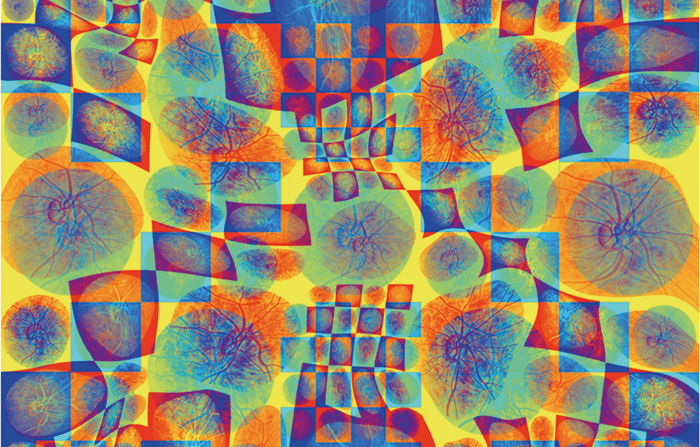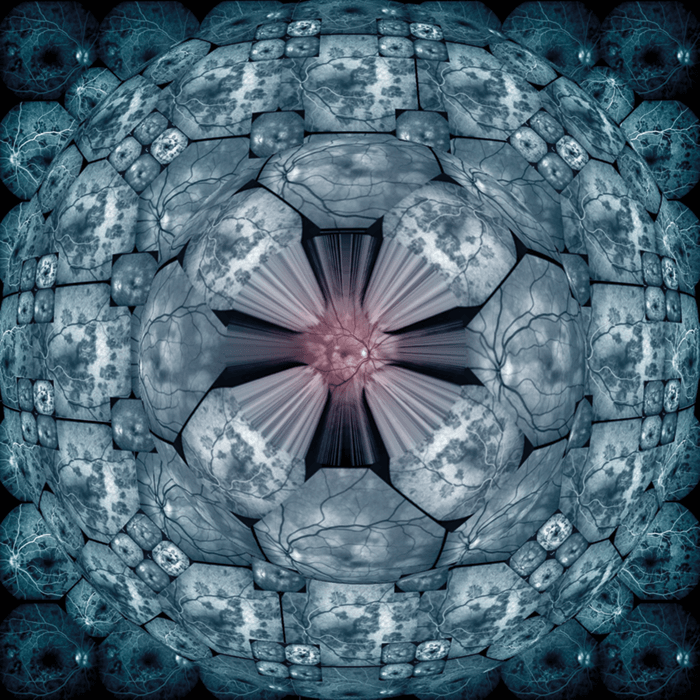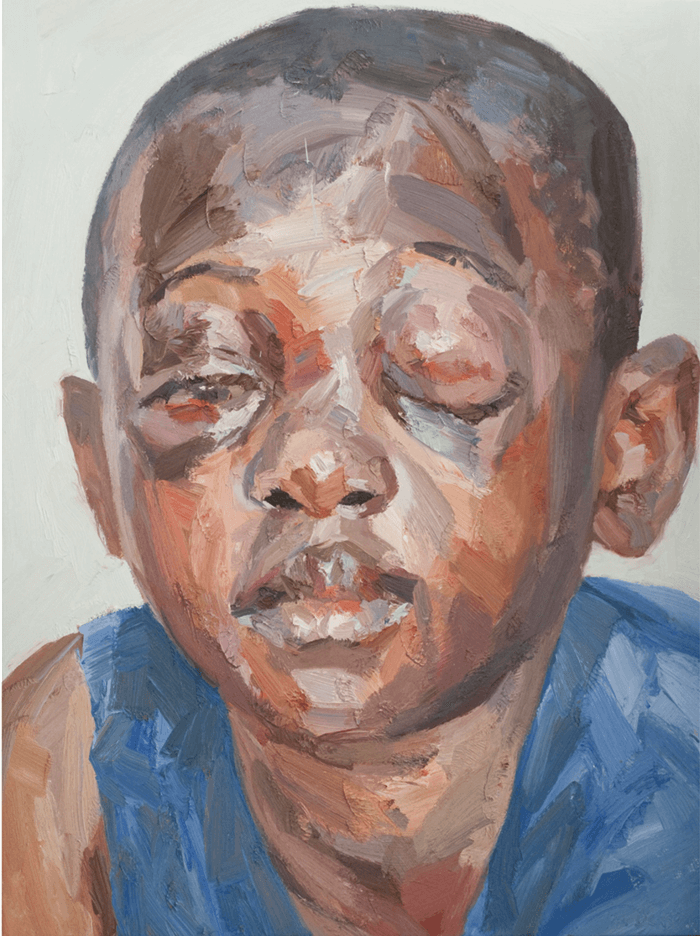
Temwani had a tumor over his left eye. It was successfully removed, and his vision has improved dramatically. He has been able to return to school. From the Orbis Visions of Zambia project.
“The best camera is the one you have with you.” Chase Jarvis. Art is created in the mind and manifested through the mediums you have at your disposal. It is up to the artist to possess the desire and will to master the medium and produce art. This image was captured on a cell phone attached to a Haag-Streit slit lamp.
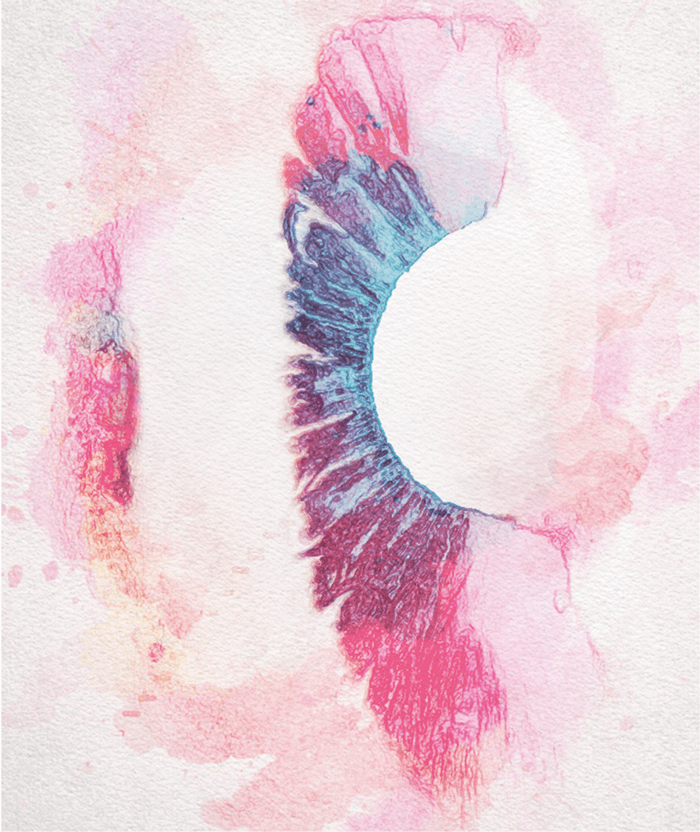
During my time teaching I taught my students “you can’t cheat in art, you can only use your resources wisely.” Cell phone photography is not cheating, it is just another tool in our arsenal.
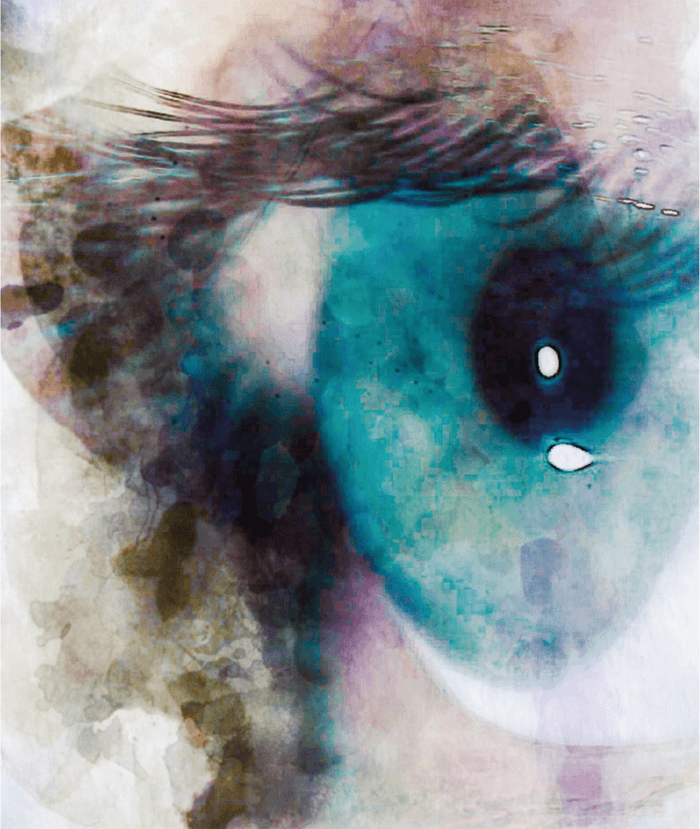
Post-production of a photograph can provide for unlimited possibilities. This is the same photograph of a single retina with various post-production techniques. Kelly Aileen Oldstein, Certified Ophthalmic Photographer at Chester County Eye Care, and owner of Kelly Aileen Photography, Chester County, PA.

These images are from Project VISIONS, an initiative which aims to make science in vision accessible through art. The creators, Dorota Skowronska-Krawczyk, Assistant Professor at the UC San Diego Shiley Eye Institute and Eva Henry, a Toronto based artist, report that the project was born from a mutual passion that the beauty of science should be shared with those who do not have formal scientific training. Despite vast geographical differences, the pair spent countless hours sharing and discussing ideas over Skype to take science out of the laboratory and make it accessible. “People need a language that deciphers the intricacies of microscope imagery, and the language that is accessible to everyone is art,” say the duo. “The colors that bring out the biological structures under the scientist’s microscope are replaced by watercolors and inks that capture the viewer’s eye: the presented visuals are not about providing answers or medical illustrations, but more about storytelling, and the viewers are invited to add their own understanding or simply absorb what is presented to them.” The team say their goal is to reach the world and establish a firm mark as the “A” in the STEAM (Science, Technology, Engineering, Art and Mathematics) concept. To achieve this, the duo have held ‘Science and Art’ events at UC San Diego which combine information on Dorota’s scientific research in glaucoma and other age-related eye diseases with the story of science and art coming together, and the importance of sharing science with general public. Next, the team plan to ‘take the show on the road’, delivering guest lectures at libraries and conferences, as well as academic institutions. Dorota and Eva say “Apparently, if you love what you do you will never work a day in your life… we feel like we have just secured a permanent day off!” Project VISIONS: Dorota Skowronska-Krawczyk, Assistant Professor, Shiley Eye Institute, University California San Diego (UCSD), CA, USA (http://dsklab.ucsd.edu), and Eva Henry, Artist, Toronto, Canada (http://www.evahenryart.com). More information on Project VISIONS and the full gallery can be viewed at www.the-visions.com
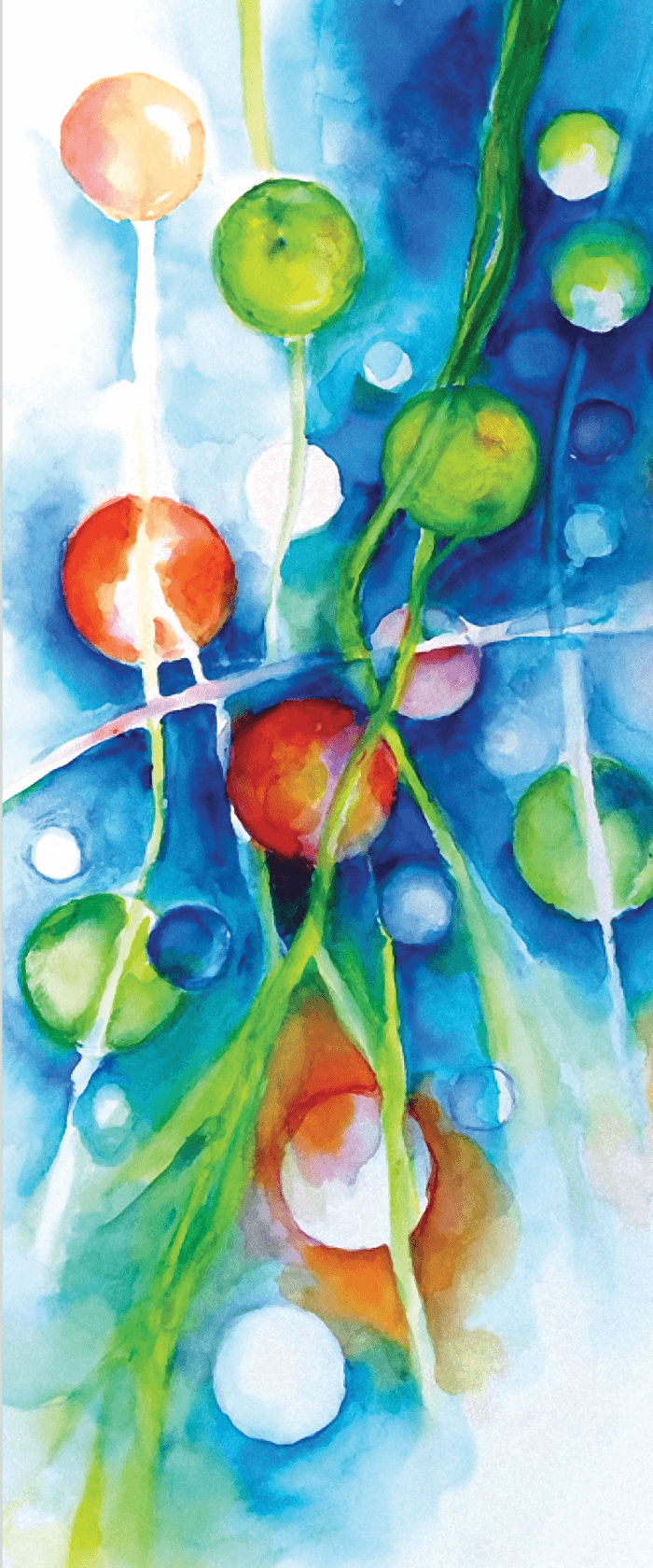
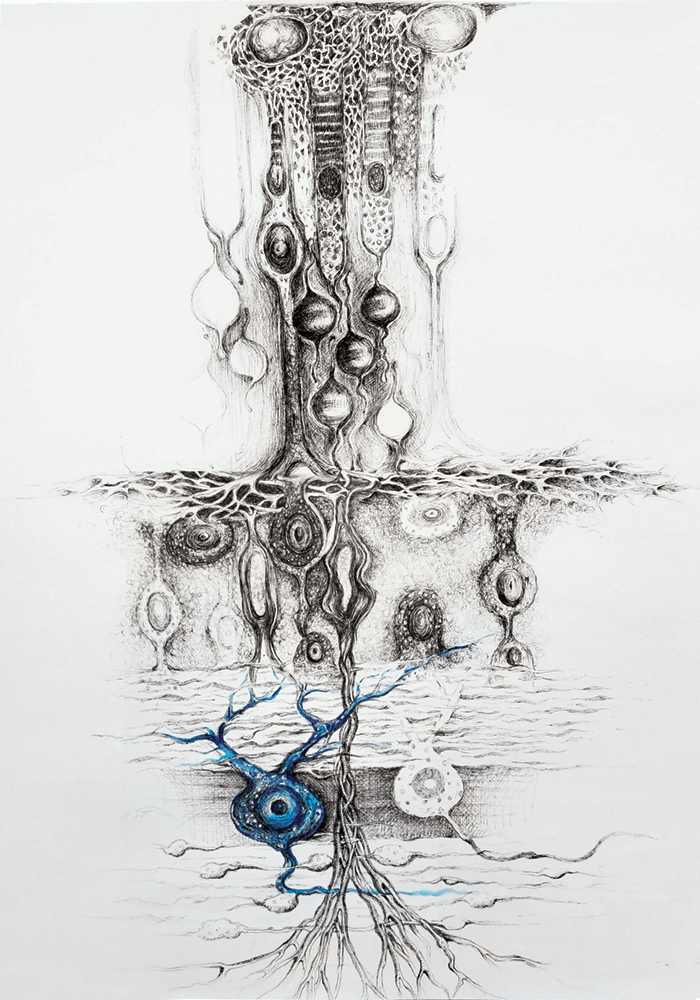
These illustrations are by Terry Tarrant, a renowned medical illustrator, employed by the Institute of Ophthalmology in London, England. Tarrant worked in the Medical Illustrations Department from 1950 until 1984. The Institute is now part of UCL. Tarrant’s images were created following indirect ophthalmoscopy of patients, and were an important adjunct to medical records. With an incredible eye for detail, Tarrant was known to produce the finest medical illustrations of the fundus, external diseases of the eye and details of instruments and operating procedures, and painted hundreds of medical cases - including retinal breaks, detachments and degenerations. Many of his images were published in papers and textbooks, and were invaluable for the education of ophthalmology trainees worldwide. His paintings are on display at Moorfields Eye Hospital and in the Joint Library of Ophthalmology, located in the UCL Institute of Ophthalmology, London, UK, where the originals are kept in the archive. NIHR Biomedical Research Centre at Moorfields Eye Hospital and UCL Institute of Ophthalmology and The Joint Library of Ophthalmology, Moorfields Eye Hospital & UCL Institute of Ophthalmology.
The central retina is illustrated with the optic disc obscured by a large neurofibroma that is lifting and detaching the surrounding retina.
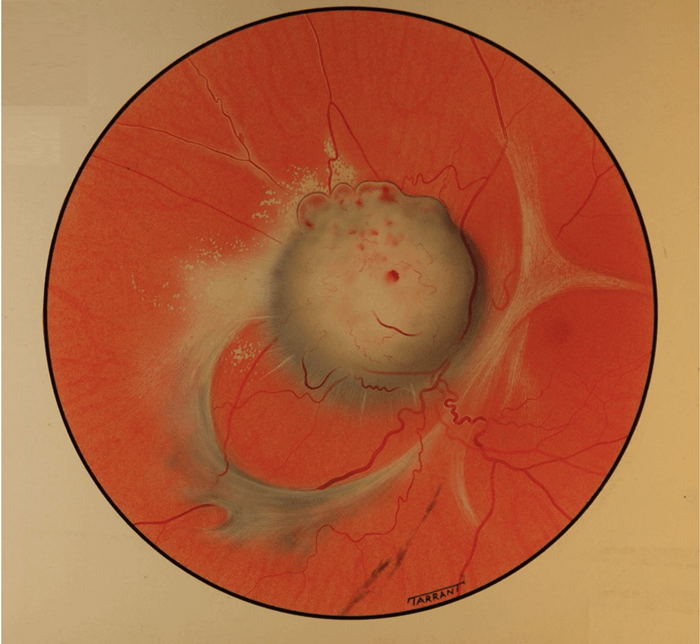
White scar tissue distorts the retina and obscures details of the optic nerve head and blood vessels.
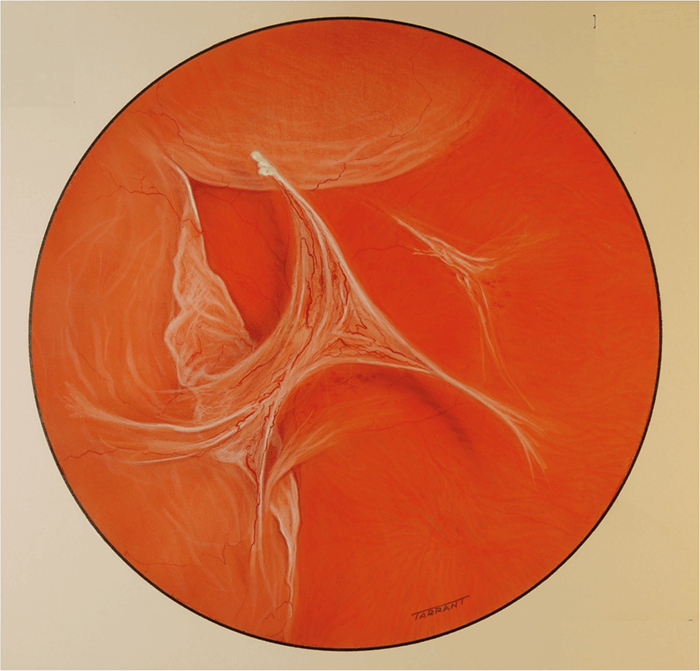
A reflection from a slit lamp beam is horizontal to emphasize the area of scleral guttering adjacent to the cornea.
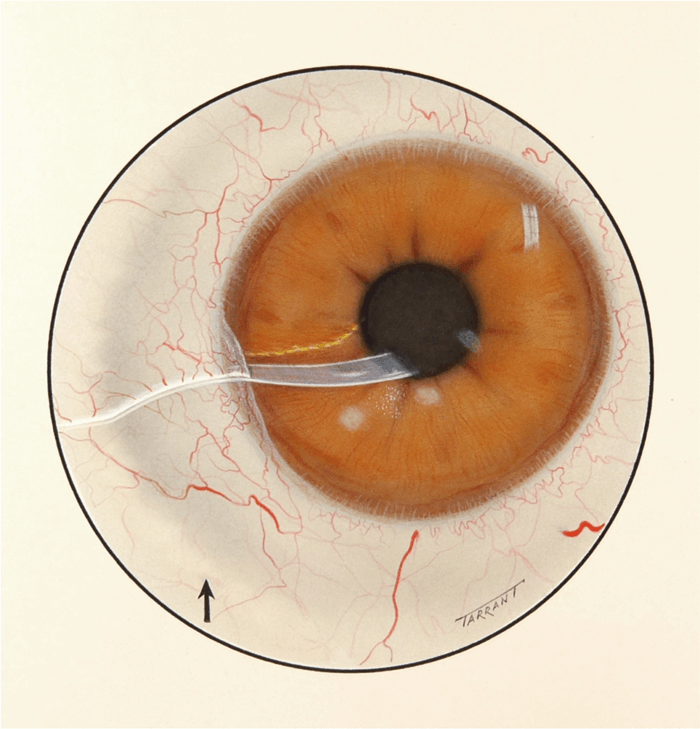
“As an ophthalmic photographer, my training had always been to rigorously document diseased retina for specialists in ophthalmology. But as a creative photographer, I found retinas to be visually fascinating. These quilts were distilled from everyday images I found around me. My personal images have always been reflections of self: I’d always photographed from the inside out. The work emerges from black and white digital images which are layered, manipulated, and colored. The patients are anonymous and unidentifiable. The finished work is presented in galleries as a traditional fine print. In the end, these documentary clinical images become art which is looking back at us.” Pat Saine, former ophthalmic photographer and owner of Blue Plate Books, Winchester, VA. http://www.pjsaine.com/.
